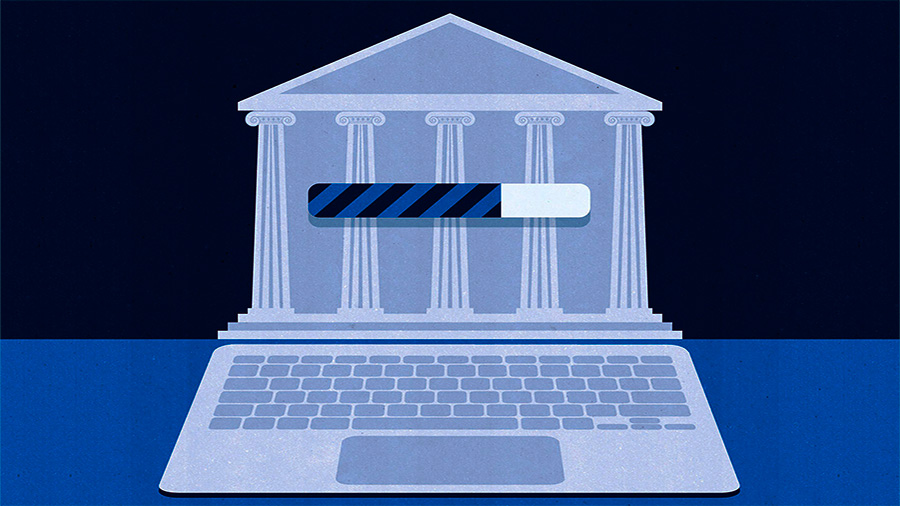Sovereign credit ratings are significantly influenced by political and economic conditions, shaping a nation’s creditworthiness. Political stability fosters investor confidence and positively impacts ratings, while economic uncertainty can lead to downgrades. Institutional investors rely heavily on these ratings for assessing risk and making informed investment decisions. The credit rating process involves a thorough analysis of financial health, industry conditions, and management quality, culminating in a rating decision by a committee. However, limitations such as subjectivity, data quality issues, and lack of standardization pose challenges. Transparency and effective communication are crucial for ensuring fair and accurate ratings, aiding in better decision-making and market stability.
How Do Political And Economic Conditions Impact Sovereign Credit Ratings?
Political and economic conditions directly impact sovereign credit ratings by affecting a country’s creditworthiness. When political institutions are stable, they foster a trustworthy environment for investors, positively influencing ratings. You should be aware that economic uncertainty, on the other hand, negatively affects ratings by increasing perceived risk.
If you have both political stability and economic certainty, they interact to improve a nation’s credit rating. However, lower economic uncertainty is crucial to maximizing the positive impact of strong political institutions on these ratings.
Changes in ratings also influence a country’s financial markets and capital costs. An upgrade lowers borrowing costs, while a downgrade increases them. Additionally, credit ratings reflect and can sway investor perceptions, impacting government support and electoral outcomes.
To sum up, your country’s political and economic conditions heavily influence its credit ratings, shaping borrowing costs and investor confidence.

Why Do Institutional Investors Rely Heavily On Credit Ratings?
Institutional investors rely heavily on credit ratings because these ratings offer a quick, reliable way for you to assess investment risk. Agencies like Moody’s, Standard & Poor’s, and Fitch provide valuable insights into an issuer’s creditworthiness by evaluating financial performance, credit history, and industry trends.
Credit ratings are crucial because they help you gauge the likelihood of an issuer defaulting on their obligations, simplifying your investment decision-making process. They also ensure you comply with regulatory frameworks and investment guidelines, making them essential to your strategy.
High credit ratings can lower borrowing costs and increase market access, while low ratings can do the opposite. Despite past criticisms, improvements since the 2008 financial crisis have made these ratings more reliable and trusted today. You can also use ratings to compare investment opportunities across different sectors and countries easily.
To wrap things up, credit ratings are indispensable tools that help you assess risk, make informed investment decisions, comply with regulations, and compare opportunities seamlessly.
What Is The Process Credit Rating Agencies Follow To Assign Ratings?
Credit rating agencies follow a structured process to assign ratings. Here’s how it works:
- Information Gathering: First, they gather information about the entity, including financial statements, historical performance, industry trends, and management quality. You can think of this as their homework phase.
- Financial Health Analysis: Next, they analyze financial health by looking at debt levels, profitability, liquidity, and cash flow stability. This step helps them understand the entity’s capability to handle financial obligations.
- Industry and Economic Conditions Evaluation: Then, they evaluate industry and economic conditions. This means they consider how external factors might impact the entity’s ability to repay debt.
- Analyst and Committee Review: After that, the credit analyst team meets with the entity to discuss its creditworthiness. They prepare a detailed credit presentation covering key analytical factors.
- Rating Committee Decision: The information is then presented to a rating committee of senior analysts. This committee reviews and discusses the details before deciding on a rating.
- Assignment and Communication: Once the committee agrees, the rating is assigned and communicated to the issuer, then released to the public. A detailed credit report is published, explaining the rating and the reasons behind it.
In the end, understanding this process helps you see how credit ratings affect interest rates and investor confidence, giving you a clearer view of how entities get rated and what it means for their financial future.

What Limitations And Challenges Exist In The Credit Rating Methodology?
The main limitations and challenges in the credit rating methodology are:
- Subjectivity and Bias: These ratings often rely on qualitative judgments and expert opinions, which can introduce personal biases. Different analysts might interpret a company’s performance differently, skewing the rating.
- Data Availability and Quality: Accurate ratings depend on reliable and timely data. In some sectors, especially in emerging markets, data can be scarce or inconsistent, affecting the rating’s credibility.
- Pro-cyclicality: Credit ratings tend to amplify market trends. During economic booms, ratings can be overly optimistic, while during downturns, they might become excessively pessimistic, potentially destabilizing the market.
- Herding Behavior: Agencies often follow each other’s actions. For instance, if one agency downgrades a sovereign bond, others might follow suit, causing a snowball effect in market reactions.
- Lack of Standardization: The lack of standardization in methodologies across different credit institutions is another challenge. This inconsistency makes it difficult for you to compare ratings from different sources.
- Complex Criteria: The criteria used in ratings are often diverse and complex. Agencies must consider many factors, such as financial stability, profitability, and market conditions, making it difficult to measure accurately across industries and regions.
- Inadequate Forecasting: Traditional credit rating methodologies often fail to predict financial crises or sudden market changes, leading to outdated or inaccurate ratings during turbulent times.
As a final point, you should remember these limitations: subjectivity, data issues, pro-cyclicality, herding behavior, lack of standardization, complex criteria, and inadequate forecasting. Understanding these challenges will empower you to make more informed decisions.
How Does Transparency And Communication Play A Role In The Credit Rating Process?
Transparency and communication are critical in the credit rating process, as they ensure you and other stakeholders can make well-informed decisions based on accurate information. When credit rating agencies (CRAs) are transparent, you gain confidence in seeing how ratings are determined, allowing you to assess risks more effectively.
Achieving transparency, however, can be challenging. While CRAs often keep methodologies and data sources confidential to avoid manipulation, this secrecy can hinder transparency. The complex financial models they use can be difficult to understand, making the process seem opaque. Additionally, because CRAs are paid by the issuers they rate, there’s a potential conflict of interest that can compromise objectivity.
To tackle these issues, regulatory frameworks have been established to enhance transparency and reduce conflicts of interest. These frameworks require CRAs to disclose their methodologies and performance statistics, differentiate ratings for different products, and ensure those involved in rating decisions do not negotiate fees. Such measures allow you and other investors to independently judge risks and ensure fairer access to information.
Bringing it all together – transparency and communication in the credit rating process help keep the market stable, enhance fairness, and support informed decision-making for everyone involved.





